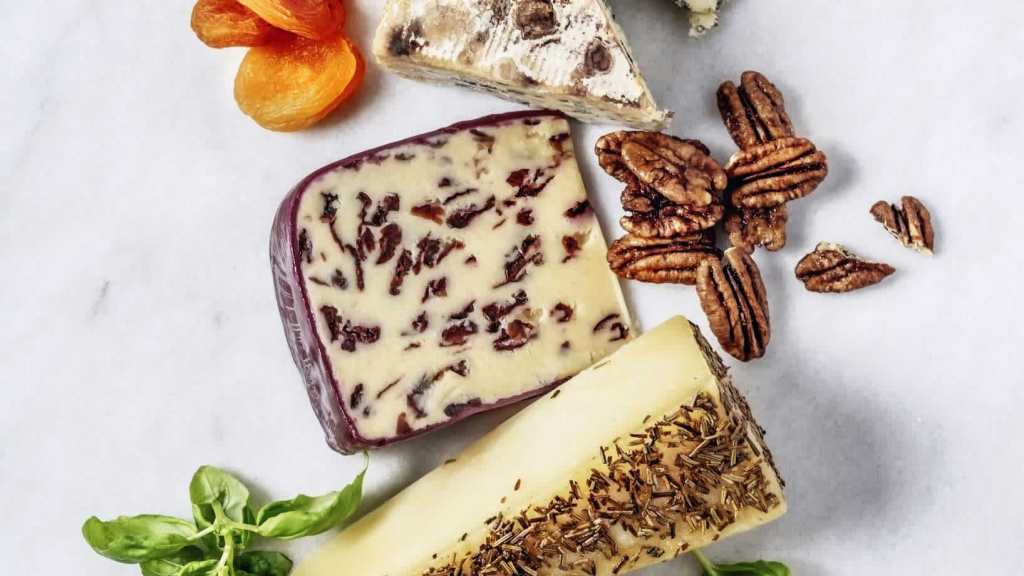Remember when we were told to watch our consumption of cheese? Well, according to recent research published in The Lancet, many types are actually good for us. All within reason of course.
A study that examined the dietary habits of more than 130,000 people from 21 countries, has found that eating at least two servings of dairy daily, including cheese, resulted in a reduced risk of stroke and developing cardiovascular disease.
This suggests whole dairy foods like cheese may offer benefits that haven’t previously been considered when it comes to heart health.
It also means eating cheese regularly may not be a bad thing, as long as you get your portions right!
Feta
Made from sheep or goat’s milk, feta is a crumbly aged cheese soaked in brine, giving it a salty taste with flavours ranging from mild to sharp.
Slightly lower in fat than cheddar cheese (21%), it’s relatively high in sodium, with almost double the salt content of cheddar.
Feta can be a calcium-rich, tasty addition to salads and because of its rich flavour, it can easily be enjoyed in small amounts. You can find it in a reduced-fat variety, but it tends to be a little rubbery.
Soft cheese
Soft cheeses like brie and camembert are made from warming whole or reduced-fat cow’s milk and setting it with culture and salt before it’s aged in controlled environments for weeks or months at a time.
The longer soft cheese is left to age, the stronger its flavour.
Similar to cheddar, soft cheese contains roughly 100 calories per 30g serve, 8g of fat and 5-6g of protein.
The biggest issue with soft cheese is the volumes you can eat, as it’s particularly tasty. For this reason, cutting serves prior to eating the entire round will help control consumption.
Cream cheese
While “reduced-fat” or “light” varieties of cream cheese are available, in its natural state it’s 35% fat with a quarter of the protein of regular cheddar cheese.
Cream cheese was traditionally made with leftover milk that was soured using lemon juice or vinegar and then strained. Modern processing now sees it made with added emulsifiers and stabilisers to keep it consistent for purchase.
Often added savoury and sweet flavours as well as in lower-fat varieties, cream cheese is a popular spread and dip. But as it lacks the protein of aged cheddar and feta, portion control is the key to avoiding a total fat overload.
It’s easy to polish off an entire container in a single sitting once the tub has been opened!
Halloumi
A salty, semi-hard cheese that’s generally made from a mixture of goat and sheep’s milk and set with rennet, haloumi has a high melting point and is often served grilled or fried.
Nutritionally, haloumi contains slightly less fat (26%) than regular cheddar cheese, but more than double the sodium content, thanks to the brine used to preserve it.
Haloumi is delicious and as such, one of the biggest issues it poses is the risk of overeating as it’s easy to demolish a 200g packet in a single meal. This equates to an extra 680 calories, 54g of fat and almost 3000mg of sodium! Portion control is therefore crucial.
Goat’s cheese
Goat’s cheese is simply made by letting raw milk curdle, before draining and pressing the curd. It contains a similar fat content to feta (18-21%).
With its rather basic processing, the extra bonus of using goat’s cheese is that it contains very little salt.
Another great thing is that its rich flavour means you need very little. You can therefore enjoy it as a spread or salad addition for maximum flavour for far fewer calories and fat than if you used heavy halloumi or cheddar cheese.
Cheddar
Cheddar is an aged, semi-hard cow’s milk cheese produced when milk curd is heated and kneaded with salt before the whey is drained.
The remaining blocks are then stacked and left to mature for a number of months in controlled temperatures.
Cheddar is high in protein (26%), calcium as well as a number of key nutrients involved in bone development including magnesium and phosphorus.
A single 30g serve (the size of a matchbox) provides 8g of protein and more than 200mg of calcium.
The main issue is that regular cheese is 30-40% fat, meaning it contains up to 10g of fat per 30g serve, a significant proportion of which is saturated fat.
This is compared to “reduced-fat” or “light” varieties of cheese, which contain 25% less fat, or “low fat”, somewhat rubbery varieties of cheddar that contain less than 3% fat and barely resemble cheese at all.
Cottage cheese
The pick of the bunch when it comes to health, cottage cheese is extremely nutrient dense. Made from the curd of milk, which gives it its loose, soft texture, it contains more than 16g of protein per ½ cup along with calcium, magnesium and vitamin B12. A serve of cottage cheese is a great way to bump up your intake of essential nutrients for very few calories.
Popular with dieters, cottage cheese can be enjoyed with fruit as a high-protein breakfast, on crackers as a filling snack, mixed into dips or added to salads for a significant protein boost.
The low calorie and fat content of cottage cheese means you can enjoy it freely, with as much as ½-1 cup a generous yet nutritious serve.
This story originally appeared in Fitness First magazine.







